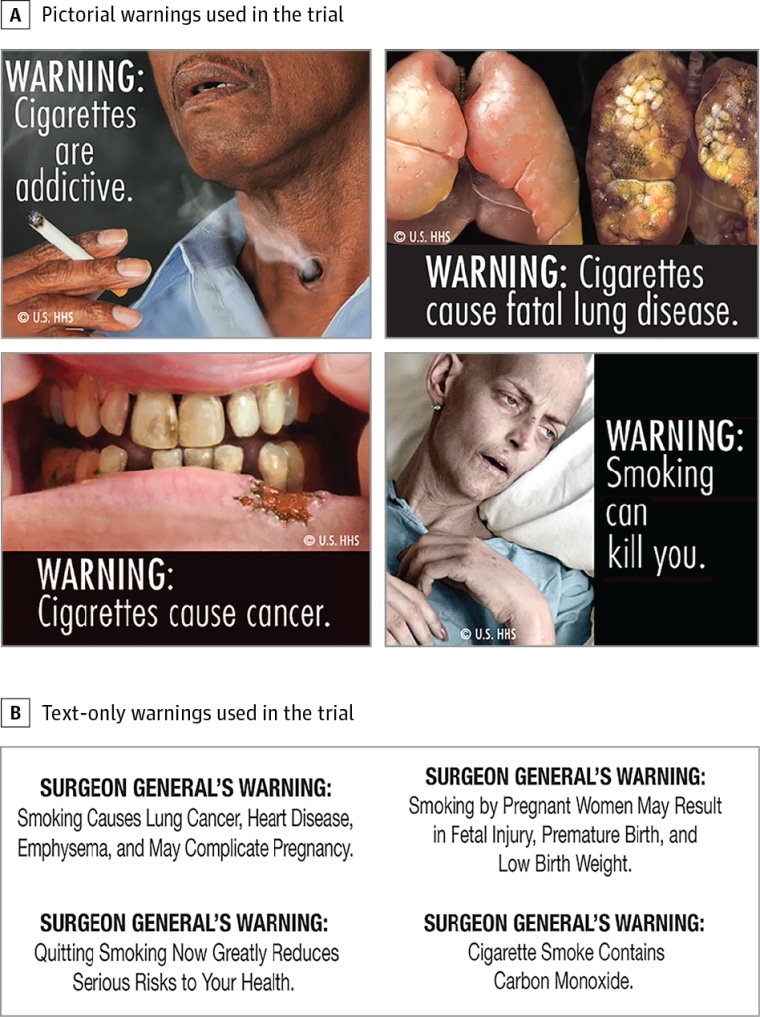More smokers would try to quite if tobacco companies were forced to include frightening pictures on cigarette packs, researchers said Monday.
They found that smokers were more than 29 percent more likely to at least try quitting if they were given packets that carried images of rotting teeth or people dying of cancer.

The U.S. government tried to force tobacco companies to put such images on their packs, but in 2012, U.S. District Judge Richard Leon ruled that this violated the companies' First Amendment rights.
New Food and Drug Administration rules will require larger labels.
Noel Brewer of the University of North Carolina at Chapel Hill and colleagues tested the idea with more than 1,900 adult smokers. They slapped on stickers with either text-only or photo-enhanced warnings on their cigarette packs.
With pictures, smokers were 29 percent more likely to try quitting during the study, they reported in the Journal of the American Medical Association's JAMA Internal Medicine.
"Smokers who received pictorial warnings were more likely to report a quit attempt lasting one day or longer during the trial than were smokers who received text-only warnings," they wrote. Forty percent of the smokers who got picture stickers at least tried, versus 34 percent of those who got text-only stickers on their cigarettes.
“Current warnings in the United States are small and barely noticeable."
“Smokers told us that the pictorial warnings didn’t make them feel any more at risk for harm from smoking. However, the pictorial warnings made the harms of smoking ever present and vivid, while the usual text warnings were bland, stale, and easy to ignore,” Brewer wrote in email to Reuters Health.
Related: U.S Government Fights for Images on Cigarettes
"Despite the relatively short duration of the trial, 5.7 percent of smokers exposed to pictorial warnings had quit smoking for at least one week by the end of the trial compared with 3.8 percent of those exposed to text-only warnings, translating to an absolute increase of 1.9 percent," the team wrote.
"In relative terms, this is a 50 percent increase."
The volunteers came to the clinic with their own cigarette and the researchers put the stickers on. The smokers were told the point of the study was to see how well they understood the labels on their cigarette packs.
The written warnings included: “Quitting smoking now greatly reduces serious risks to your health,” and “Smoking causes lung cancer, heart disease, emphysema and may complicate pregnancy.”
Related: U.S. Proposed Scary Cigarette Labels
“Current warnings in the United States are small and barely noticeable, as they are on the side of the cigarette packages and have had the same messages for over 30 years,” said Jim Thrasher, a public health researcher at the University of South Carolina who did not take part in the study.
(Reuters Health contributed to this story)